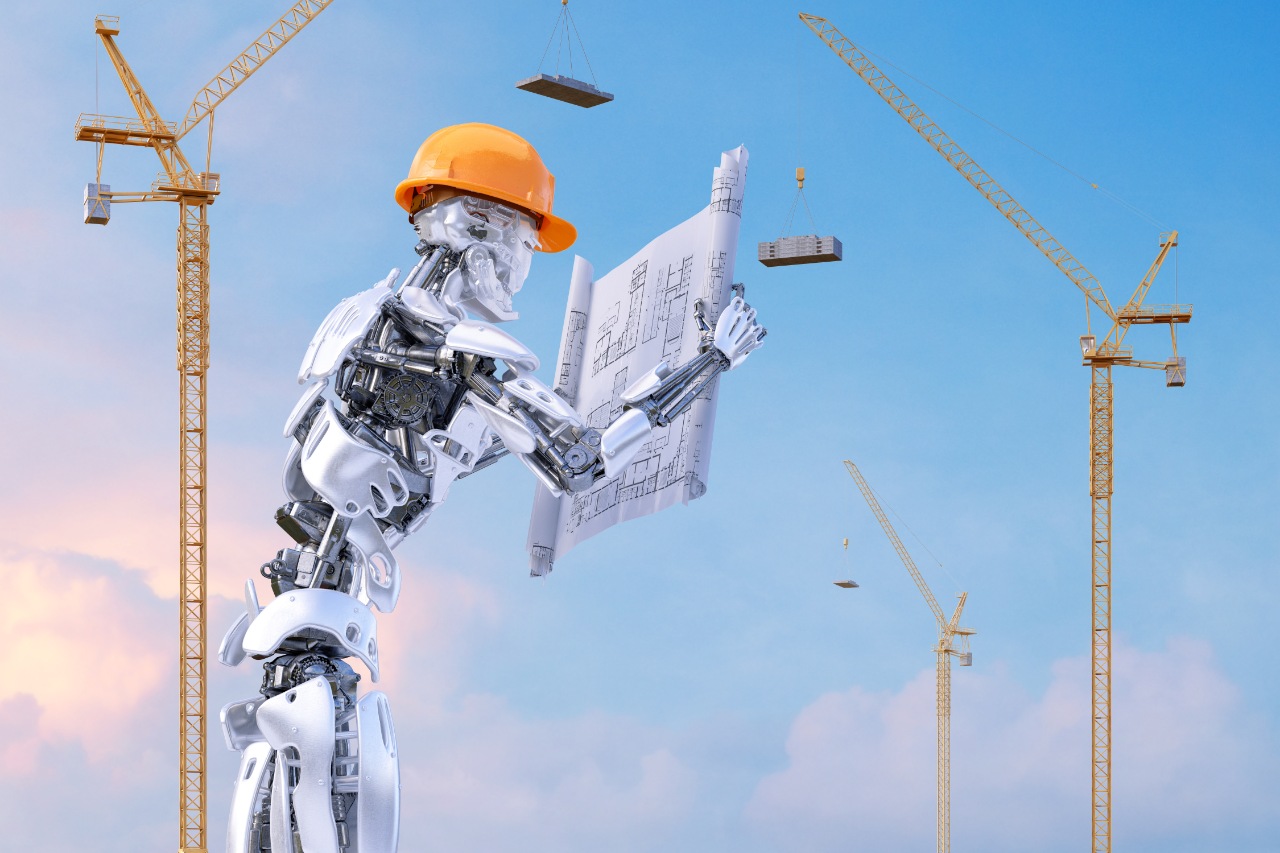Robots, machine learning and 3D printing: This is not your grandfather’s construction site
May 13, 2019
Balfour Beatty, an international infrastructure group known for financing, designing and building large, complex infrastructure projects, predicts construction sites in 2050 will have more robots and less humans. Robots will do the heavy lifting to build structures, drones will constantly fly over the site, collecting data to solve problems before they occur, and the people on the job site will wear “robotically enhanced exoskeletons and will use neural-controlled technology to move and control the machinery and other robots on site.”
While the picture painted above depicts a future construction site that looks vastly different from a current construction site, automation and technology are already being used throughout the lifecycle of a construction project.
We’ve already discussed how unmanned aerial vehicles and unmanned ground vehicles are being used to improve the safety on construction sites. Here’s a look at additional ways automation and technology are changing the construction industry.
3D Printing
Much excitement surrounds the adoption of 3D printing, also called additive manufacturing, by the construction industry. Some researchers predict that 3D printing will become a common part of the fabrication process.
Europe’s biggest construction project, a new east-west railway line in London is using 3D printing to make the moulds for concrete panels that line the walls of a passenger tunnel. By using a 3D printer, it only takes three hours to make the moulds instead of the eight days needed for traditional mould-making techniques.
In Amsterdam, a combination of 3D printing and robots were used to create a steel pedestrian bridge that will span a canal. In the production process, “six-axis robots were used to ‘draw’ the 4-metre-wide structure in the air from layers of molten steel.” The bridge performed well during the informal load tests. The bridge will also include smart sensors that will collect data regarding the bridge’s strain, displacement and vibration plus the air quality and temperature. Sensors can also capture how many people cross the bridge and how fast they drive. Over time, this data will be used for future 3D printed metal bridge designs.
Some offices and homes have been created with materials made with 3D printing, but this is still in the testing stages since printed concrete just isn’t strong enough to be structurally sound.
Building Information Modeling
We previously wrote a blog post about Building Information Modeling(BIM), which is software that uses intelligent 3D models to digitize a construction site. In that post, Gary Burke, director of the newly-launched construction management and critical infrastructure programat Capitol Technology University, describes BIM as “modeling plus a database plus a set of collaborative tools. It’s an extremely powerful resource that not only streamlines the entire construction process, but allows you to make better decisions early on – because it shows you the impact of those decisions on the final product.”
As an article in Constructible explains, “the true power of BIM lives in the “I” (information). All of the information gathered—from conception to completion—isn’t just stored, it’s actionable.”
A new BIM360 project-management platform, called Construction IQ, uses artificial intelligence technology to better predict when small quality and safety issues in the field will become big problems. This software“is designed to apply machine learning to automatically analyze field and other data to risk ratings for the project that are displayed in a software dashboard.”
Big Data
As BIM, sensors, drones, and other technologies become more mainstream, they will collect massive amounts of data from each construction site. AI and machine learning systems can then be used to analyze this data and improve future construction projects.
Capitol Technology University offers bachelor’s degrees in construction management and critical infrastructure and unmanned and autonomous systems – with an available unmanned and autonomous systems minor. At the master’s level, we offer master’s in critical infrastructure and master’s in unmanned and autonomous systems policy and risk management.
Our doctoral program offerings include PhD’s in construction science, critical infrastructure, manufacturing, occupational health and safety, and unmanned systems applications. You can check them out here.



